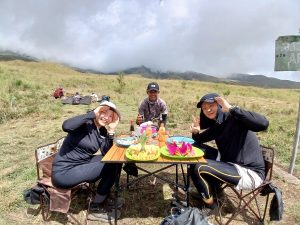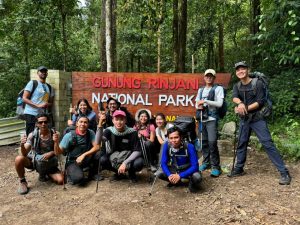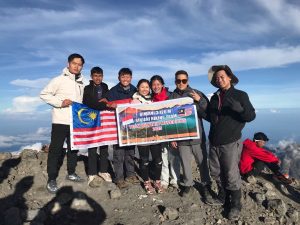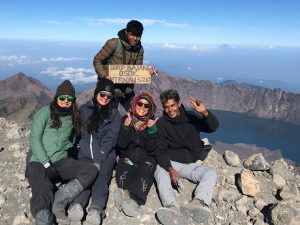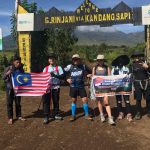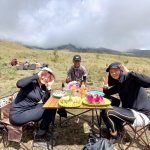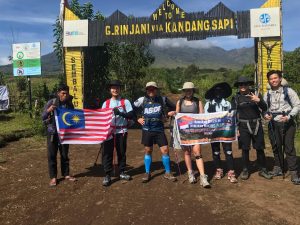
- +62 85951713852
- info@rinjanihiker.com
- Teres Genit, Lombok
BOOK NOW
For More detail trekking tour information or book our Rinjani trip package please do not hesitate to contact us.

History of Mount Rinjani In Lombok Indonesia
Mount Rinjani, located on the island of Lombok in Indonesia, is one of the most active volcanoes in the country with a rich geological history. The geological evolution of Mount Rinjani reflects intense volcanic activity and environmental changes over time. Here is an overview of the geological history of Mount Rinjani:
1. Initial Formation (Pliocene to Early Pleistocene)
- Early Activity: The formation of Mount Rinjani began in the Pliocene to Early Pleistocene period, around 3 million years ago. During this time, underwater volcanic activity led to the creation of an underwater volcano that eventually emerged as a volcanic island.
- Formation of Volcanic Complex: Continued volcanic activity led to the development of a large volcanic complex.
2. Pleistocene (Approximately 2.6 million – 11,700 years ago)
- Intensive Volcanic Activity: During this period, volcanic activity continued with significant eruptions forming volcanic cones and calderas.
- Formation of the Rinjani Caldera: A significant event in Rinjani’s geological history was the formation of the large caldera known as the Rinjani Caldera. This caldera was formed due to a massive eruption that emptied the magma chamber beneath the volcano, causing the summit to collapse and form a large basin.
3. Holocene (11,700 years ago – present)
- Samalas Eruption (1257 AD): One of the largest eruptions in Rinjani’s history was the Samalas Eruption in 1257 AD. This highly explosive eruption produced widespread volcanic ash that reached the global atmosphere, affecting the global climate. The eruption also formed the large caldera that is now Segara Anak Lake.
- Formation of Mount Barujari: After the Samalas Eruption, volcanic activity continued within the caldera, resulting in the formation of a new volcanic cone known as Mount Barujari. This cone remains active to this day and frequently experiences minor eruptions.
4. Modern Volcanic Activity
- Contemporary Eruptions and Volcanic Activity: Mount Rinjani continues to exhibit volcanic activity up to the present day. Periodic small to moderate eruptions occur, featuring ash emissions, lava flows, and the formation of minor craters.
- Volcanic Monitoring: Due to its ongoing activity, Rinjani is closely monitored by Indonesia’s volcanology centers. This monitoring is crucial for mitigating volcanic disaster risks for the surrounding population and tourists.
Conclusion
The geological history of Mount Rinjani demonstrates a long journey of volcanic activity that began millions of years ago. From its initial formation to major eruptions like the Samalas Eruption and modern volcanic activity, Rinjani continues to evolve and change, making it one of the most fascinating and dynamic geological features in Indonesia.

Rinjani Hiker is a tour package provider that offers unique and unforgettable experiences for travelers.
